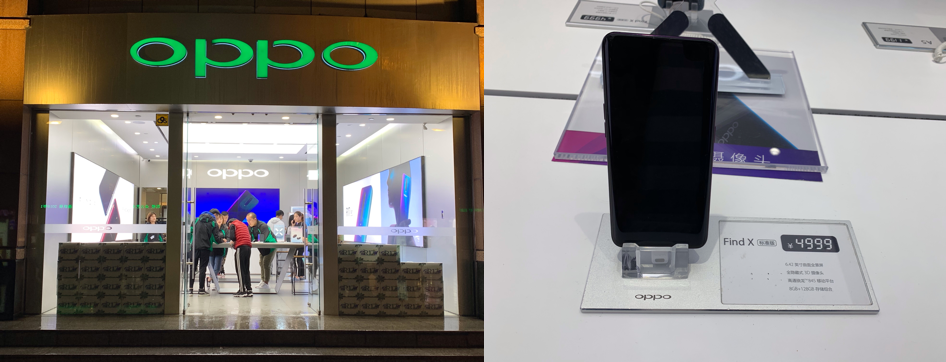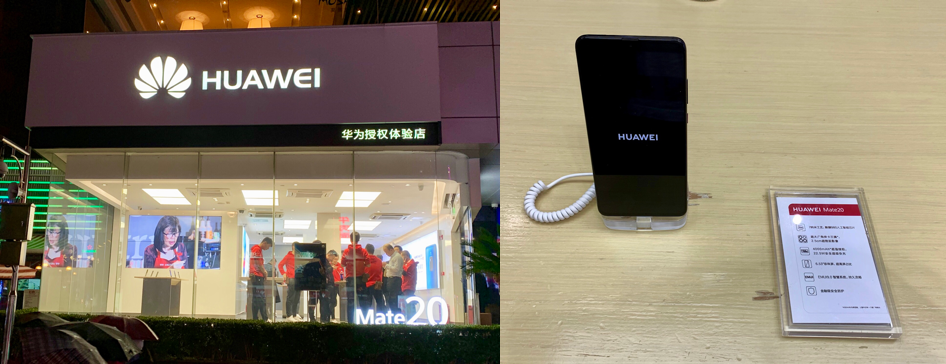The big story yesterday afternoon was Tim Cook’s surprise letter to investors announcing that Apple’s Q1 2019 revenue would come in far below the $89 to $93 billion guidance that it provided back on November 1st of 2018. Tim rattled off numerous factors that promoted Apple to issue a revenue warning one month prior their first earnings call of 2019. The most prominent factor – China. But what about China?
Apple’s China Challenges Go Beyond The iPhone’s Price
Apple’s exposure to China is sizable and has grown to constitute 20 percent of the company’s global annual revenue. Throughout fiscal 2018, Apple delivered revenue surprises in China with Q2 2018 revenue growing 21% year-over-year. At the time Tim Cook claimed that the iPhone X was the top-selling phone in China during the quarter. Before the iPhone XS series and iPhone XR models were released late last year, the iPhone X was already commanding a massive premium over other smartphone offerings in China and globally with an ASP of $793 versus analyst consensus estimate of $750.
Though the iPhone XS Max raised the top-end price of the iPhone line up by 20 percent, can we definitively assume that pricing was the root of Apple’s Q1 malaise in China? The iPhone XS is currently priced the same as the iPhone X was more than a year ago and the iPhone 8 and iPhone 7 make up solid mid/low-end offerings starting at $449. We have known about the slowdown in the smartphone market in China since 2017. Upgrade cycles have lengthened as iOS is supported on iPhones that are up to six years old. Apple was the top-selling mobile phone brand on Alibaba during Singles Day. So what changed since November of 2017? Sino-U.S. trade war.
China’s Geoeconomic Weapon in The Sino-U.S. Trade War – Consumer Nationalism
In November of 2018, Italian fashion house Dolce & Gabanna suffered a violent reaction by consumers and local retailers in China to what critics considered a racist ad. The China reaction to what was perceived as an attack on Chinese cultural identity included a social-media driven boycott of D&G products and multiple online retailers such as Alibaba and JD.com removing their products from their sites. What was once a leading luxury brand in China continues to suffer from significant and potentially long-term damage to their brand and revenue in one of the fastest growing luxury markets in the world.
Though the Sino-U.S. trade war is not necessarily an attack on Chinese cultural identity it has increasingly become a topic of concern and as a challenge to China’s digital economic ambitions prominently discussed at the 2018 World Internet Conference in Wuzhen. The idea of “Made in China” is taking on new meaning with the Chinese government putting notable priority on digital self-sufficiency compared to prior years, especially in regard to semiconductors and advanced digital technologies.
As the trade tensions between the U.S. and China continue to sour going into 2019, the risks and implications of a sustained trade dispute on American brands going to market in China could be much broader and profound than an allegedly-racist advertising campaign (faux pas) of a single brand like D&G. U.S. and foreign policymakers should be concerned if the Chinese government routinely exercises campaigns to undermine foreign businesses in China by fostering and promoting consumer boycotts. After all, what Chinese brands would American’s boycott in response? Hisense? Haier? ZTE? Huawei?
Was Apple a Victim of Chinese Consumer Nationalism? Probably
We have already seen how the Chinese government reacts to geopolitical conflicts. They counter with geoeconomic measures that can have a crippling effect on foreign national brands seeking to grow in the China market. The Chinese government has exacted retaliatory policies by tapping into the nationalistic proclivities of the Chinese consumer.
The most poignant example of China’s use of consumer nationalism to sway and arguably control the dynamic of a geopolitical dispute was in their reaction to the South Korean government agreeing to all the U.S. military to deploy THAAD (Terminal High Altitude Defense) missile systems on the peninsula in 2016 in response to the increased frequency of missile tests conducted by North Korea.
To make their displeasure known, the Chinese government waged a viral anti-Korea campaign that encouraged Chinese citizens to boycott South Korean brands such as Lotte, Samsung, and Hyundai in China and went as far as banning group tourism travel to South Korea resulting in significant reductions in revenue across the board. Though there are many factors that brought about Samsung’s dramatic loss in smartphone market share in China from 20 percent 5 years ago to 1.6 percent today according to Strategy Analytics, there is no doubt that the boycott campaign had a direct influence on Samsung’s unfortunate plight in China’s smartphone market.
Flash forward to December 1 of 2018, at the beginning of the critical last month of Apple’s all-important Q1, Canadian authorities arrested Huawei’s CFO, Meng Wanzhou, in Vancouver, Canada under allegations of violating U.S. sanctions against Iran. In response, some Chinese companies encouraged employees to buy and use Chinese smartphones. Some companies were reported to have threatened to fire employees that possessed and used an iPhone. Unfortunately for Apple, they were the primary target of this campaign of consumer nationalism. The question remains – how widespread will the retaliatory response be to other U.S.-based businesses and at what cost in market share and revenue?
Consumer Nationalism – A Boon for Competitive Chinese Smartphone Brands
In Q1 of 2018, Huawei topped the smartphone market in China and in Q2 overtook Apple as the second-largest smartphone company in the world. No doubt, Apple has competition in China as Chinese brands like Huawei and Oppo up their game in the premium end of the smartphone market with offerings such as Huawei’s P20 Pro with its industry-leading camera and Oppo’s Find X with its innovative sliding front-facing camera and notch-less screen.

The challenge for Apple will be staving off the erosion of their brand differentiation as the Sino-U.S. trade war drives nationalistic Chinese consumers to opt for very capable and lower cost substitutes from native Chinese smartphone manufacturers.

Apple has its work cut for itself in China for 2019, and maybe it is important for US tech overall for Apple to succeed. With 5G on the horizon, Apple is smart to be in China, but it will need to maintain and grow market share to get a leg up in what will likely be one of the fastest evolving and growing 5G markets in the world. From the looks of it, Apple will need all the help it can get and a trade war between the U.S. and China is not it.
Implication for Business Leaders
Business leaders eyeing the China market should not underestimate the position of the Chinese government in affecting the market opportunity for foreign businesses in China. Adjust the political weighting on your PESTEL analysis of the China market to take into account the Chinese government’s willingness to foster and tap into consumer nationalism as a means to gain leverage on trade issues and geopolitical disputes. Consider the dramatic impact that geopolitics could have on your business and market opportunities in China.
Contact us if you would like to have a detailed briefing and analysis of Apple and the China technology market by a neXt Curve analyst.
Related Content & Media
- Market Insights: Apple’s Not-So-Slow-Moving Coup of The Personal Computing World
- Market Insights: iOS 12 Gave Apple a Massive Ecosystem Advantage
- Market Insights: The Passing of The Torch – Apple Watch
by
Leonard Lee
Managing Director, neXt Curve
January 3, 2019
© 2019 neXt Curve. All rights reserved.
7 comments